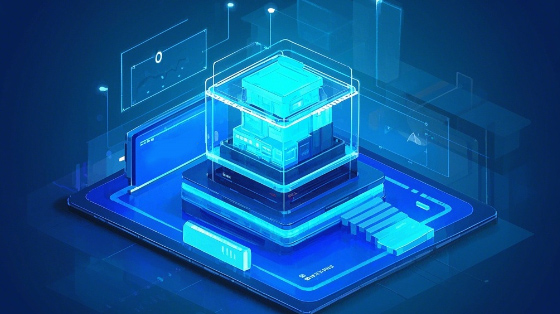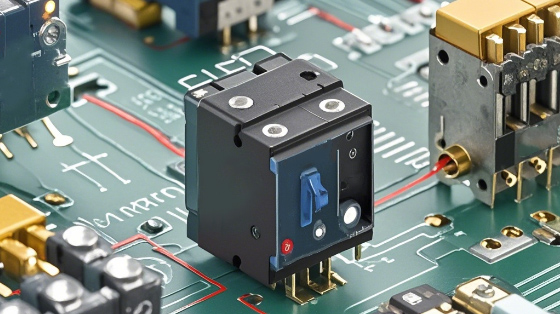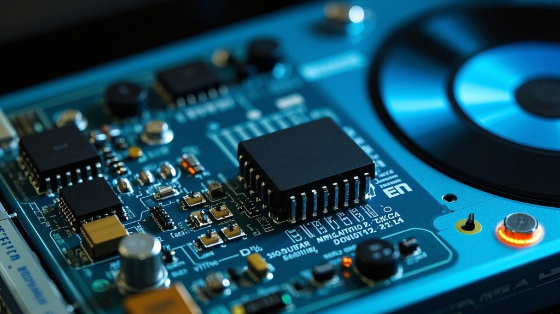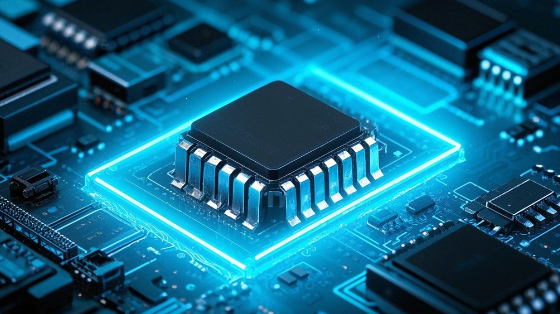In the highly mechanized and automated industrial landscape of today, a vast array of electronic components work in unison to drive production lines, control machinery, and ensure the seamless operation of various industrial processes. These industrial electronics are the unsung heroes that underpin the efficiency, precision, and reliability of modern manufacturing and industrial systems.
One of the most crucial components in industrial electronics is the programmable logic controller (PLC). A PLC is a specialized digital computer used for automation of industrial processes. It is designed to withstand the harsh industrial environment, including extreme temperatures, humidity, vibration, and electromagnetic interference. The core function of a PLC is to control and monitor input and output devices. It reads signals from sensors and other input devices, processes these signals according to a pre-programmed logic, and then sends output signals to actuators, motors, valves, and other output devices to control the industrial process. For example, in a car manufacturing assembly line, a PLC can control the movement of robotic arms, the operation of conveyor belts, and the activation of welding and painting equipment. PLCs are highly programmable, allowing engineers to easily modify and update the control logic as per the changing requirements of the industrial process.

Another essential component is the industrial motor drive. Motors are ubiquitous in industrial applications, powering everything from pumps and fans to conveyor systems and machine tools. Industrial motor drives are used to control the speed, torque, and direction of these motors. They convert the incoming electrical power, usually AC power from the mains, into a suitable form to drive the motor. There are different types of motor drives, such as variable frequency drives (VFDs) for AC motors and DC motor drives for DC motors. VFDs are particularly popular as they offer significant energy savings by allowing the motor to operate at variable speeds according to the load requirements. For instance, in a pumping station, a VFD can adjust the speed of the pump motor based on the water level or flow rate, reducing energy consumption compared to a fixed-speed motor. The motor drive also provides protection features for the motor, such as overcurrent protection, overvoltage protection, and thermal protection, ensuring the long-term reliability of the motor.
Sensors play a vital role in industrial automation as well. In an industrial setting, a wide variety of sensors are used to measure different physical parameters. Temperature sensors are used to monitor the temperature of machinery, such as in industrial ovens, furnaces, and cooling systems. Pressure sensors are deployed to measure the pressure in pipes, hydraulic systems, and pneumatic systems. Proximity sensors are used to detect the presence or absence of objects, which is crucial for applications like object positioning and collision avoidance in automated guided vehicles (AGVs) and robotic systems. For example, in a food packaging plant, proximity sensors can detect the position of products on the conveyor belt and trigger the packaging machinery at the right moment. These sensors provide real-time feedback to the PLC or other control systems, enabling them to make informed decisions and adjust the industrial process accordingly.
Industrial connectors are also an important aspect of industrial electronics. They are used to establish reliable electrical and mechanical connections between different components and devices. Industrial connectors need to be robust and durable to withstand the rigors of the industrial environment. They are designed to have high mating cycles, good vibration resistance, and protection against dust and moisture. Different types of connectors are available for various applications, such as circular connectors for harsh environments, rectangular connectors for control panels, and cable connectors for interconnecting cables. For example, in a wind turbine, where the nacelle is exposed to strong winds and vibrations, reliable connectors are essential to ensure the continuous transmission of power and signals between the generator, control systems, and other components.
Power supplies in industrial applications are designed to provide stable and reliable power to the various electronic and electrical components. They need to handle a wide range of input voltages and frequencies and provide regulated output voltages. Industrial power supplies often have built-in protection features like overvoltage protection, undervoltage protection, and short-circuit protection. In some cases, uninterruptible power supplies (UPS) are used to ensure continuous power supply in case of a mains power failure. This is critical in applications like data centers, where any power interruption can lead to data loss and system downtime. For example, in a semiconductor manufacturing facility, a stable power supply is essential to maintain the precise control of the manufacturing processes, as even a small power fluctuation can affect the quality of the semiconductor chips.
The integration and interoperability of these industrial electronics components are key to the success of industrial automation. The ability of different components to communicate and work together seamlessly is facilitated by various communication protocols. For example, industrial Ethernet protocols like PROFINET and EtherNet/IP are widely used for high-speed and reliable communication between PLCs, sensors, motor drives, and other devices. Fieldbus protocols such as Modbus and CANbus are also popular for connecting devices in industrial networks. These protocols define the rules and formats for data transmission, ensuring that different components can understand and exchange information effectively.
The future of industrial electronics looks promising, with several trends shaping its evolution. One significant trend is the increasing adoption of the Internet of Things (IoT) in industrial applications. This involves connecting industrial devices and systems to the internet, enabling remote monitoring, control, and predictive maintenance. For example, sensors and PLCs can send data to the cloud, where it can be analyzed to predict potential equipment failures and optimize maintenance schedules. This not only improves the reliability of industrial systems but also reduces downtime and maintenance costs.
Another trend is the development of artificial intelligence (AI) and machine learning (ML) in industrial electronics. AI and ML algorithms can be applied to analyze the vast amounts of data generated by industrial processes and sensors. For instance, in quality control applications, AI can be used to analyze images from cameras or sensor data to detect defects in products more accurately and quickly than traditional methods. In addition, AI can optimize industrial processes by adjusting control parameters in real-time based on the analysis of process data.
The miniaturization of industrial electronics components is also an area of focus. Smaller and more compact components allow for more efficient use of space in industrial equipment and control panels. This is particularly important in applications where space is limited, such as in portable industrial testing equipment and modular industrial automation systems.
In conclusion, industrial electronics components are the cornerstone of modern industrial applications. From PLCs and motor drives to sensors, connectors, and power supplies, each component plays a critical role in ensuring the efficient, reliable, and precise operation of industrial processes. As technology continues to advance, the future of industrial electronics holds great potential for further innovation and improvement, driving the evolution of industrial automation and manufacturing to new heights.
The global industrial electronics market is experiencing significant growth, driven by factors such as the increasing demand for industrial automation, the expansion of the manufacturing sector in emerging economies, and the need for energy-efficient and reliable industrial systems. However, the industry also faces challenges. One of the main challenges is the shortage of skilled labor with expertise in industrial electronics. As the technology becomes more complex, there is a growing need for engineers and technicians who can design, install, and maintain industrial electronics systems.
Another challenge is the security of industrial electronics systems. With the increasing connectivity of industrial devices through the IoT, there is a risk of cyberattacks. Hackers could potentially disrupt industrial processes, steal sensitive industrial data, or cause damage to equipment. Manufacturers and industrial enterprises are investing in cybersecurity measures, such as firewalls, intrusion detection systems, and encryption, to protect their industrial electronics systems.
In the energy sector, industrial electronics are used in power generation, transmission, and distribution. For example, in a solar power plant, PLCs are used to control the tracking of solar panels, motor drives are used to adjust the position of inverters, and sensors are used to monitor the performance of the solar cells. In the aerospace industry, industrial electronics are used in aircraft manufacturing and maintenance. High-reliability components are required to ensure the safety and performance of aircraft systems.
In conclusion, industrial electronics is a dynamic and essential field. Overcoming the challenges related to labor shortage and cybersecurity will be crucial for the continued growth and success of the industry, enabling it to meet the evolving needs of industrial applications and contribute to global economic development.





